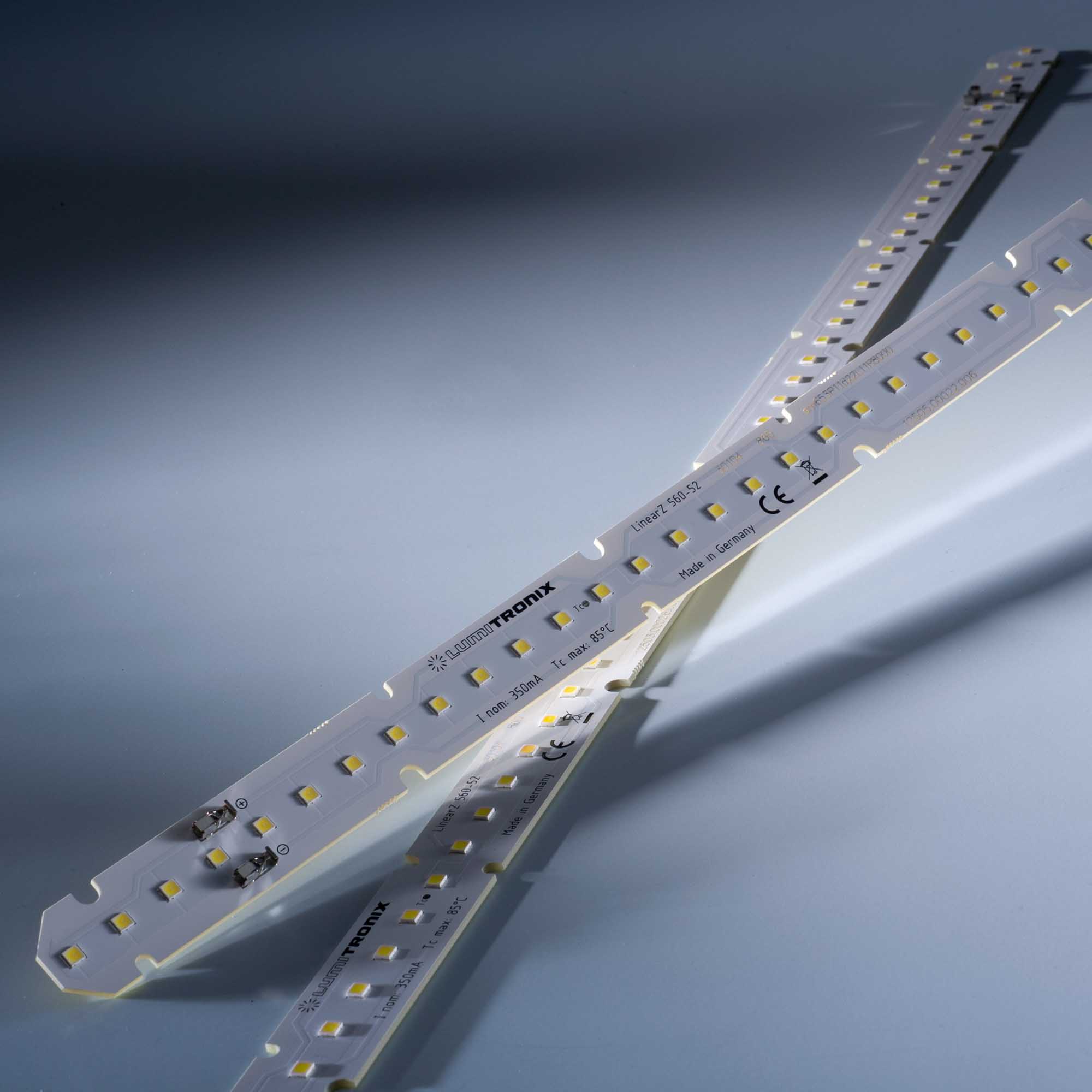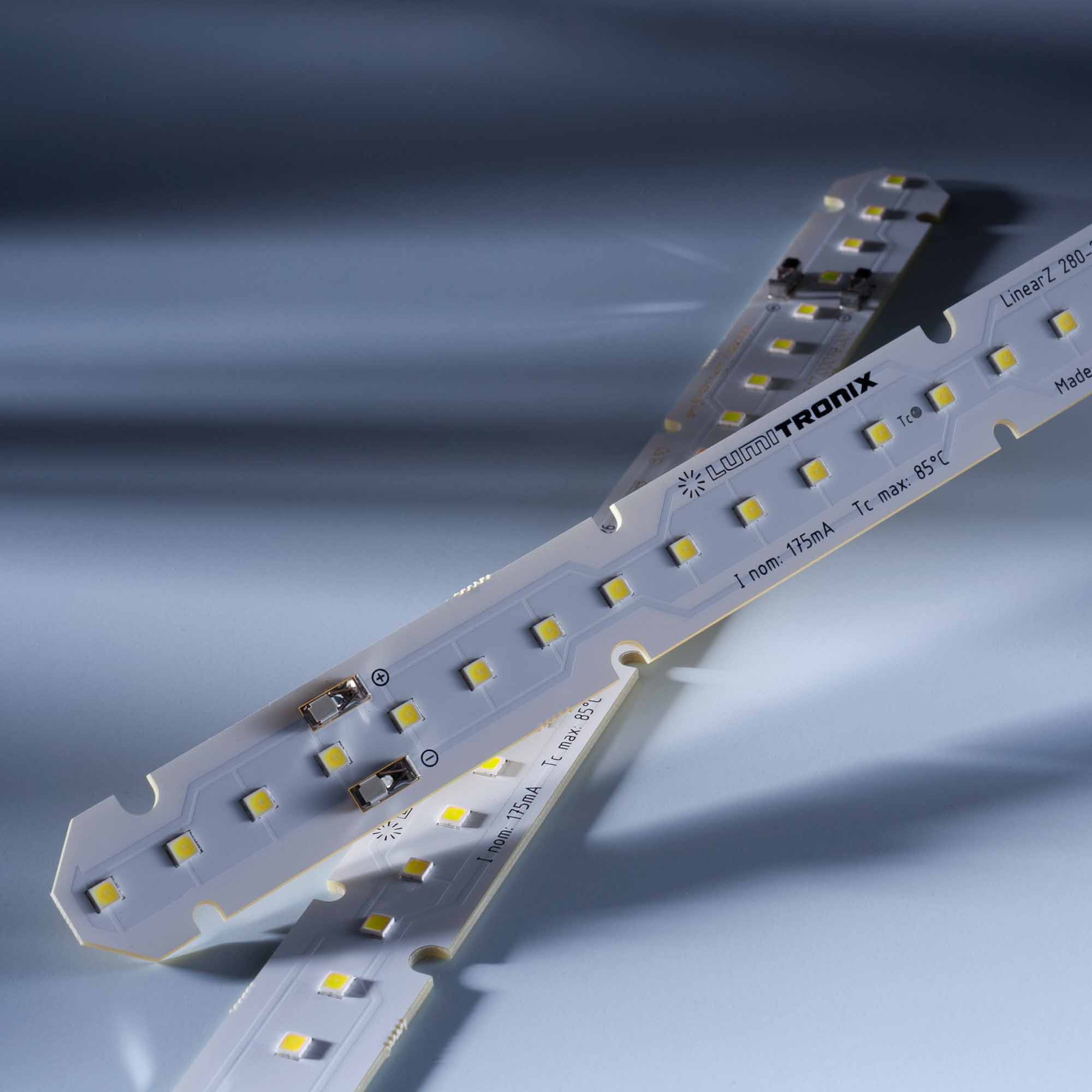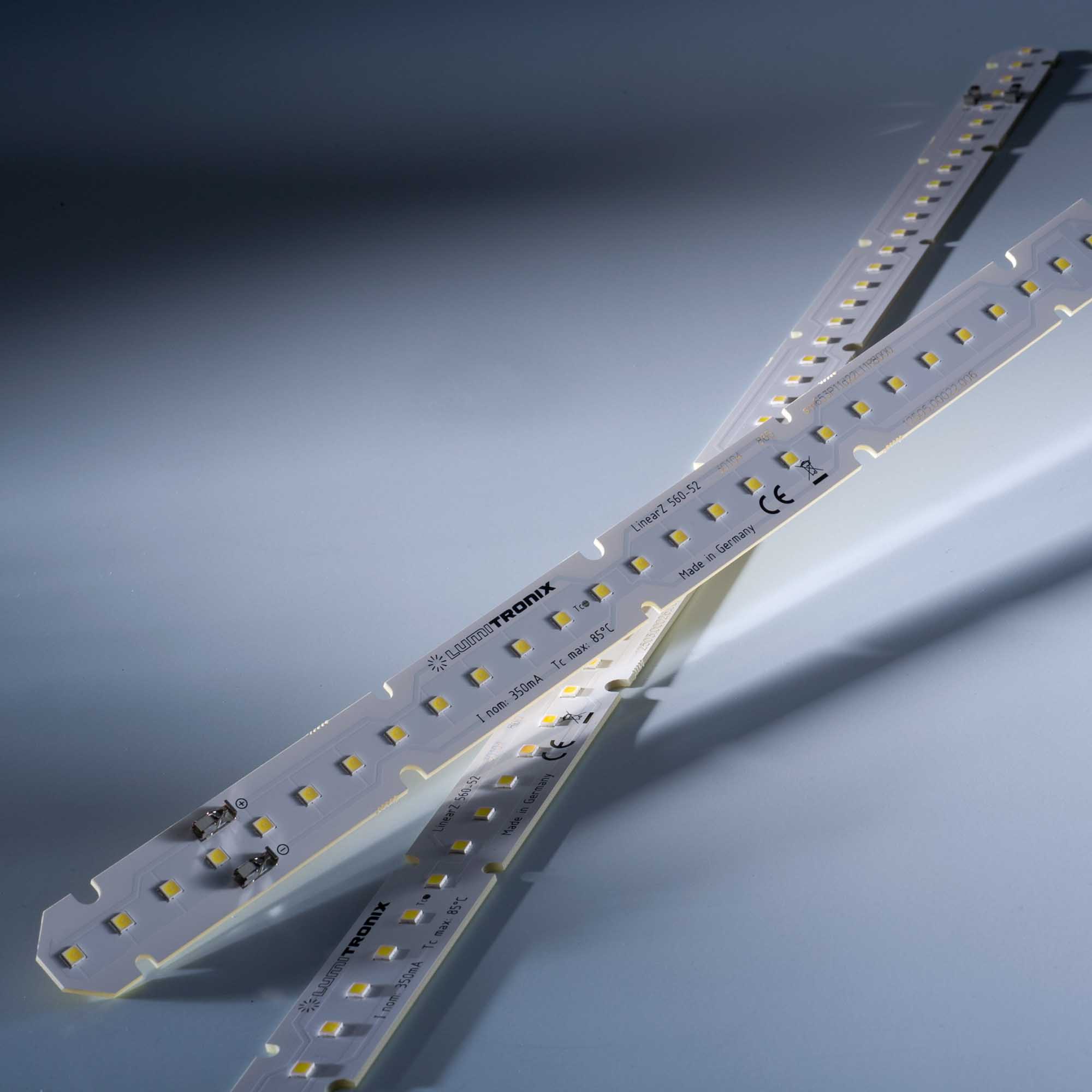NICHIA Ultra-High CRI Optisolis™ LED: closest possible match to natural light

Optisolis LEDs from Nichia have the full spectrum of sunlight
The latest innovation from world market leader Nichia in LED development is the Optisolis technology. The full-spectrum Optisolis LEDs NF2W757G-F1 and NF2L757G-F1 LEDs are capable of generating a light spectrum that comes closest to that of the sun.
The Optisolis LEDs are Ultra-High CRI light sources, with almost maximum scores for all 16 of the color samples that are used in the color rendering index metric. The 5000K Nichia NF2L757G-F1 Optisolis LED can achieve a Ra of 99 out of 100 and equaliy high IES TM-30-15 scores, of Rf 98 and Rg at 99.
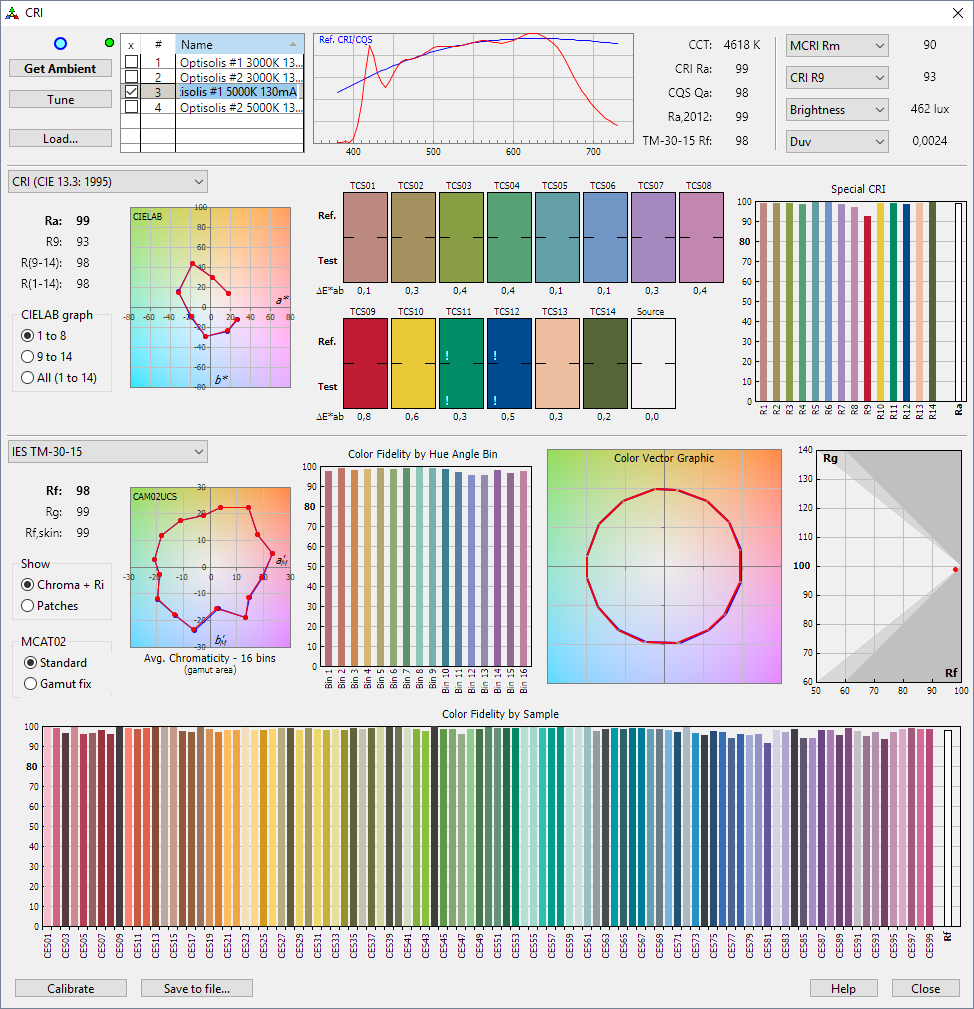
As the above test shows, the Nichia Optisolis LEDs have the highest light quality on the market at the time of this article.
The extraordinary result is achieved by using a revolutionary new phosphor technology and special blue LED chip. The spectrum of the 420nm blue chip contains almost no UV emissions and in combination with the phosphor achieves the above mentioned CRI values. The lack of violet or ultraviolet (UV) spectral energy in the emission and reduced blue light peak are very important aspects in many lighting applications such as Human Centric Lighting, Museum and Art Gallery Lighting.
Human Centric Lighting is a special type of lighting that adapts to the human inner clock and thus to the biorhythm. The Optisolis natural light spectrum fits perfectly because of the Ultra high CRI and the lack of UV light and reduced blue peak will ensure overall health and sleep patterns are only positively influenced.
For Museum and Art Gallery Lighting the Optisolis LEDs will ensure the most faithful reproduction of colors and the best understating of the artist's message because of the Ultra high CRI and TM-30-15 light quality scores The lack UV light will safeguard precious works of art from light related damage.
Additional applications include Horticulture, with the daylight spectrum leading to optimal plant growth in greenhouses or enclosed spaces, color evaluation (e.g. painting, printing), commercial lighting (e.g. retail, etc.) or other applications where Ultra-High CRI is desired.
Human Centric lighting
‘Human-centric lighting’ describes lighting that is designed to work with the human body’s natural rhythms. It relies on the well-established fact that the human eye detects the presence of a particular wavelength of blue light in the spectrum that makes up sunlight, and uses this to judge what time of day it is. In this way, light helps regulate our sleep–wake cycles and other bodily rhythms, and has a significant impact on our mood and well-being.
Human-centric lighting harnesses this effect by adjusting its brightness and colour temperature during the day to mimic natural light. To achieve its purpose, human-centric lighting must have a spectrum that resembles that of real sunlight, with just the right level of the crucial blue wavelength that triggers the body’s response. Most solutions described as human-centric do not have a spectrum that resembles that of real sunlight, so they end up providing too much or too little blue.
Nichia Optisolis LEDs are different, as are their light is closely matched to real sunlight, so they have the right level of blue that trigger the desired biological stimulus.
Commercial lighting revealing true color of merchandise
Nichia Optisolis light fixtures merchandise will look as under natural light, with the same color and contrast. The high quality light spectrum is expressed by both the traditional color rendering index (CRI) and the new Color Fidelity Index. Tests confirm, with CRI at 97+ and TM30 Fidelity Index at 96, values that indicate the high accuracy of reproducing the original color from 99 representative color indexes.
Light to reveal true color and depth for works of art
The Nichia Optislos LEDs uniform spectral power distribution enabled by a three-phosphor mix render art naturally, ensuring that visitors will fully experience color and texture. Paintings, frescoes, mosaics, sculptures and many other exhibits will have a lifelike appearance with more realistic color tones relative to any prior lighting. Moreover, the light from Optislos LEDs result in a high contrast ratio that means viewers can better perceive depth — and therefore the texture — in the works of art.
Manufacturers should choose Optisolis™ where they want to deliver a lighting product with a spectrum where all colors are reproduced as seen under a standard light. (Figure 1). As such, they will offer a solution with a color rendering index that has been significantly improved compared with the current products for general lighting. (Figure 2) Most importantly, since UV emission is essentially non-existent in the spectrum, the degradation of irradiated materials will be reduced dramatically compared to that of other light sources containing UV emission, including other market available LEDs.
The Optisolis family consists of two series, the NF2W757G-F1 and NF2L757G-F1. Both series are housed in a 3 x 3 x 0.65 mm package.
Features:
- CRI: up to 99
- Typical luminous flux:
- NF2W757G-F1: 23.0lm at 65mA
- NF2L757G-F1: 24.1lm at 65mA - Max. forward voltage: 3.3 V
- Radiation angle: 120 °
- +120°C maximum junction temperature
Applications of the Optisolis full-spectrum LED
- Museums and art galleries
- Hospitals
- Retail lighting
- Commercial Lighting
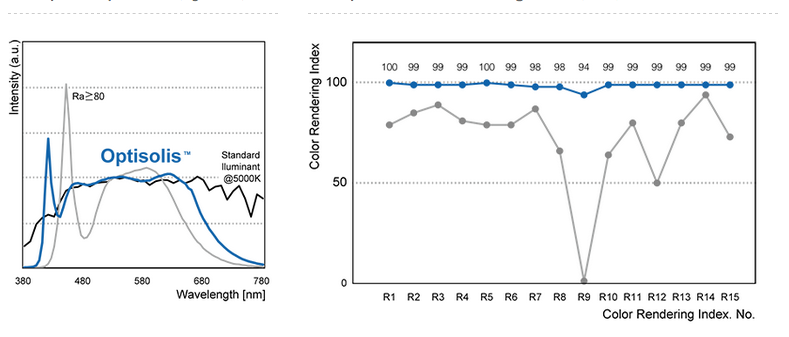

 Lumistrips UK
Lumistrips UK Lumistrips US
Lumistrips US Lumistrips ES
Lumistrips ES Lumistrips PT
Lumistrips PT Lumistrips ITA
Lumistrips ITA
